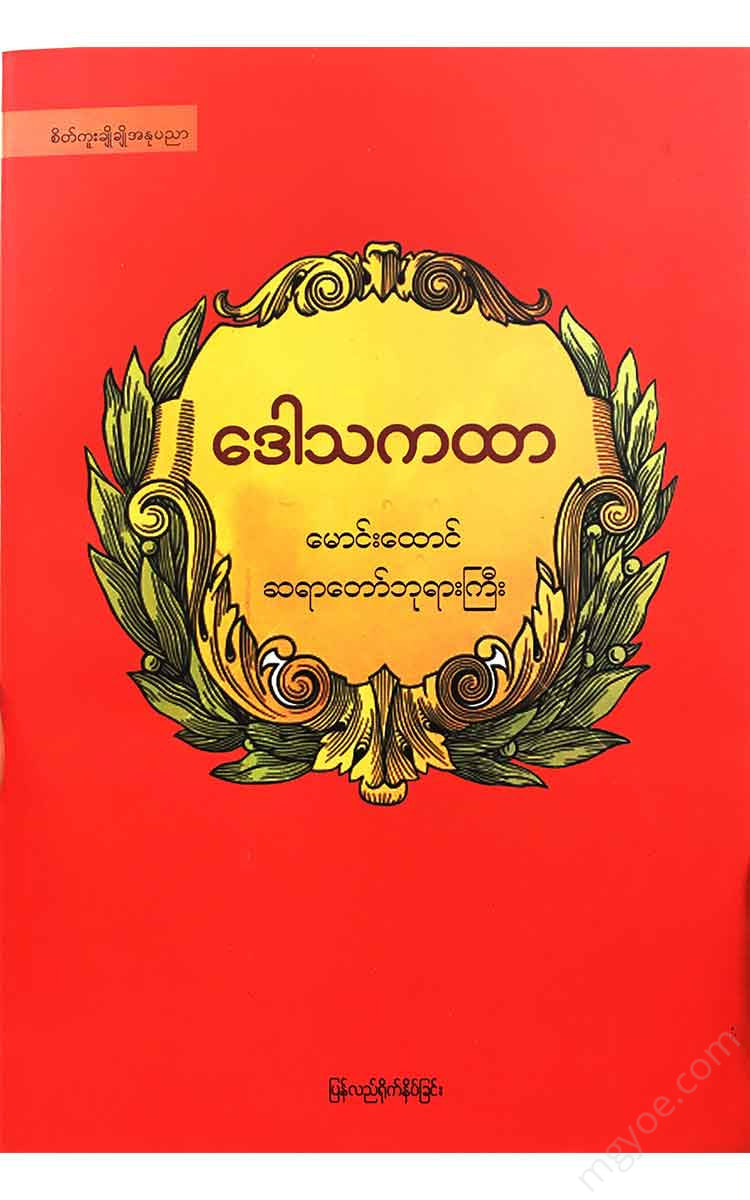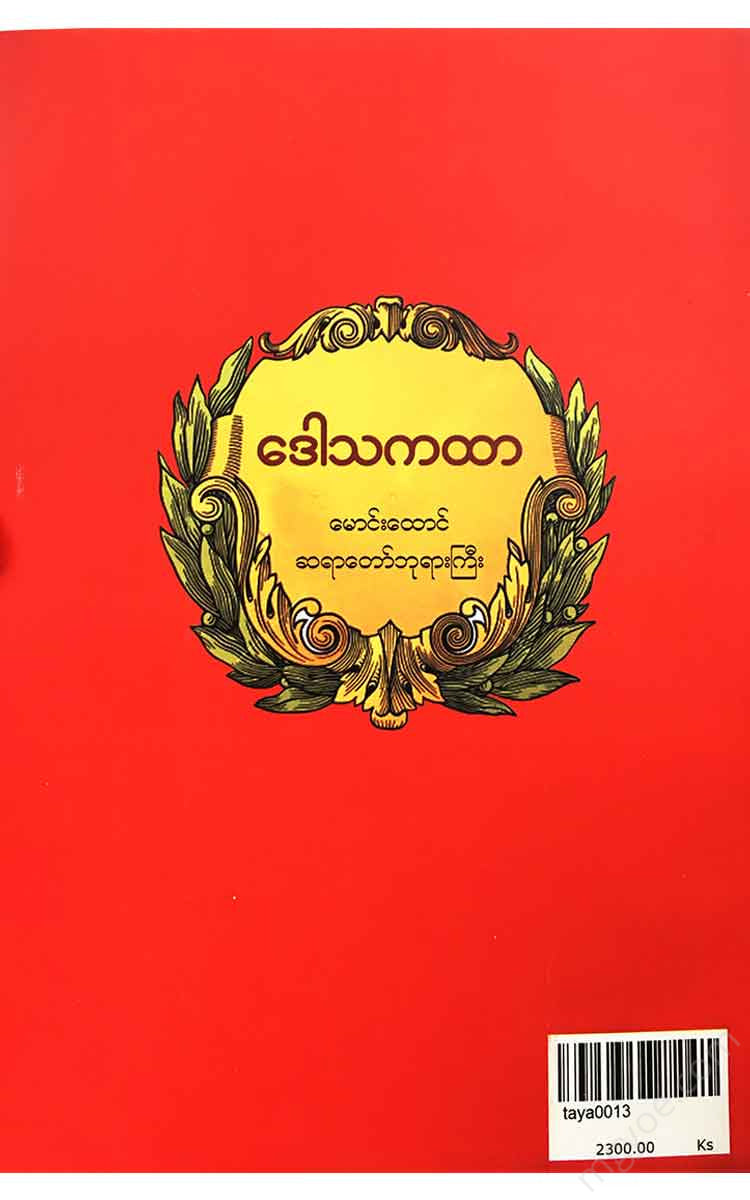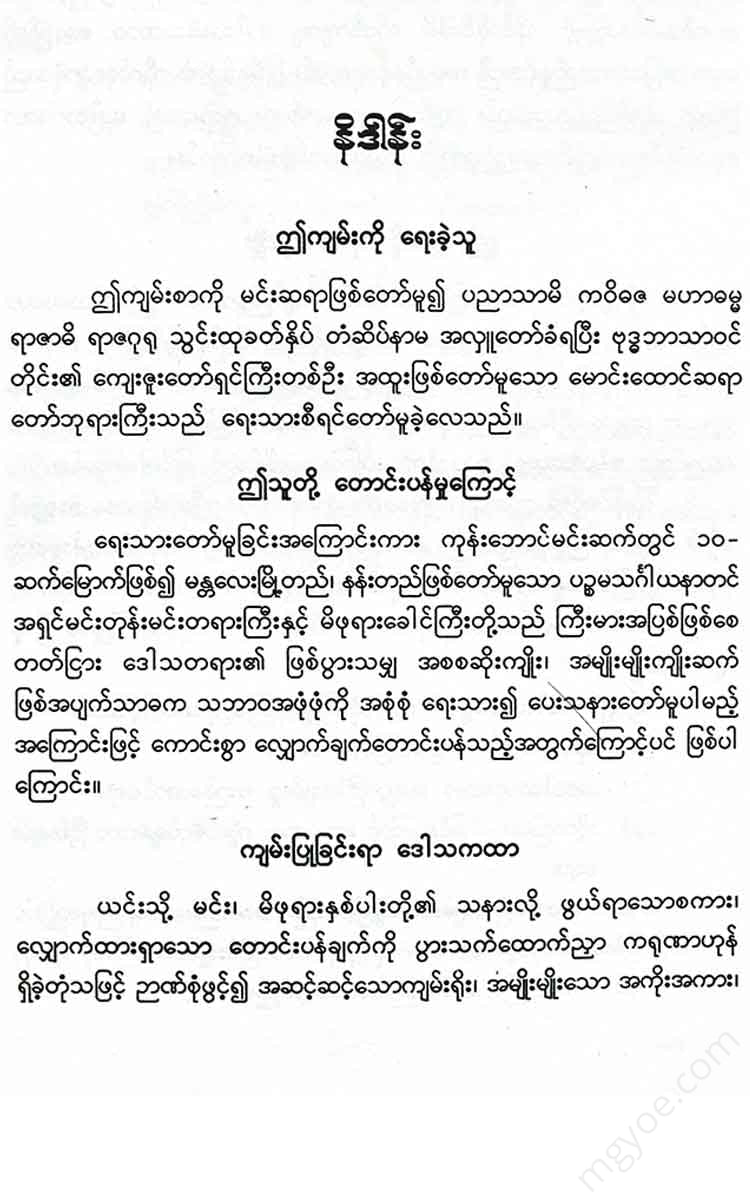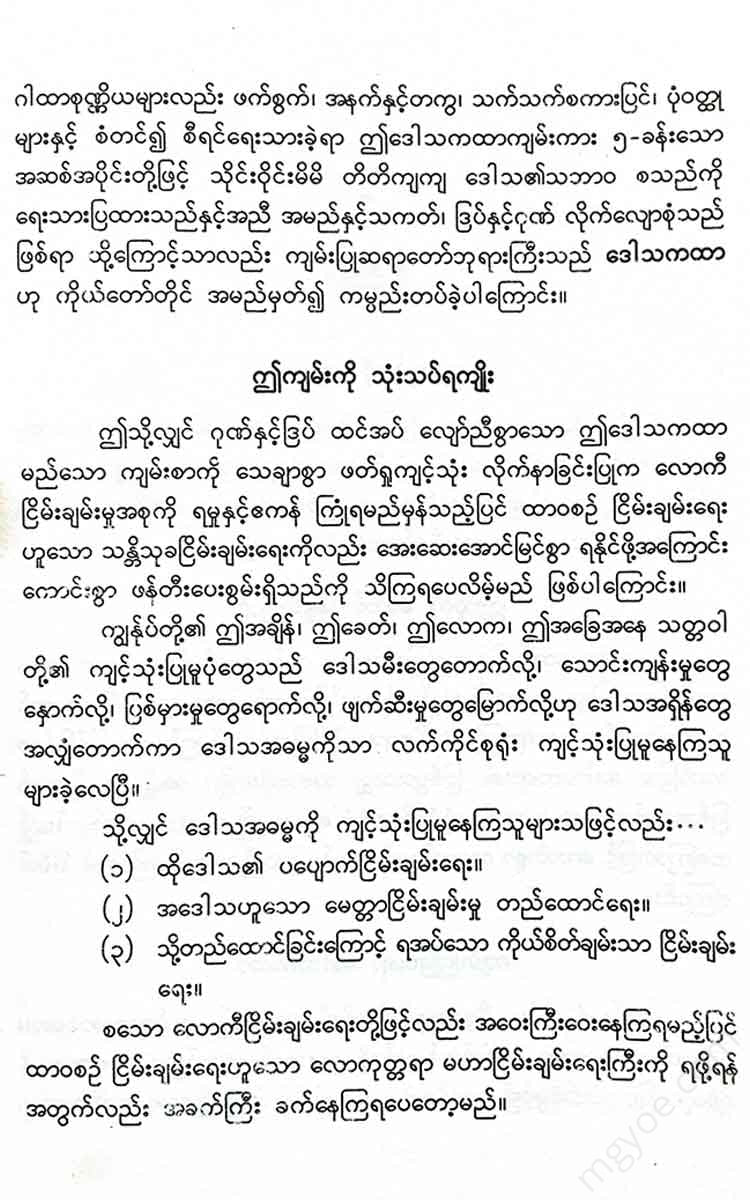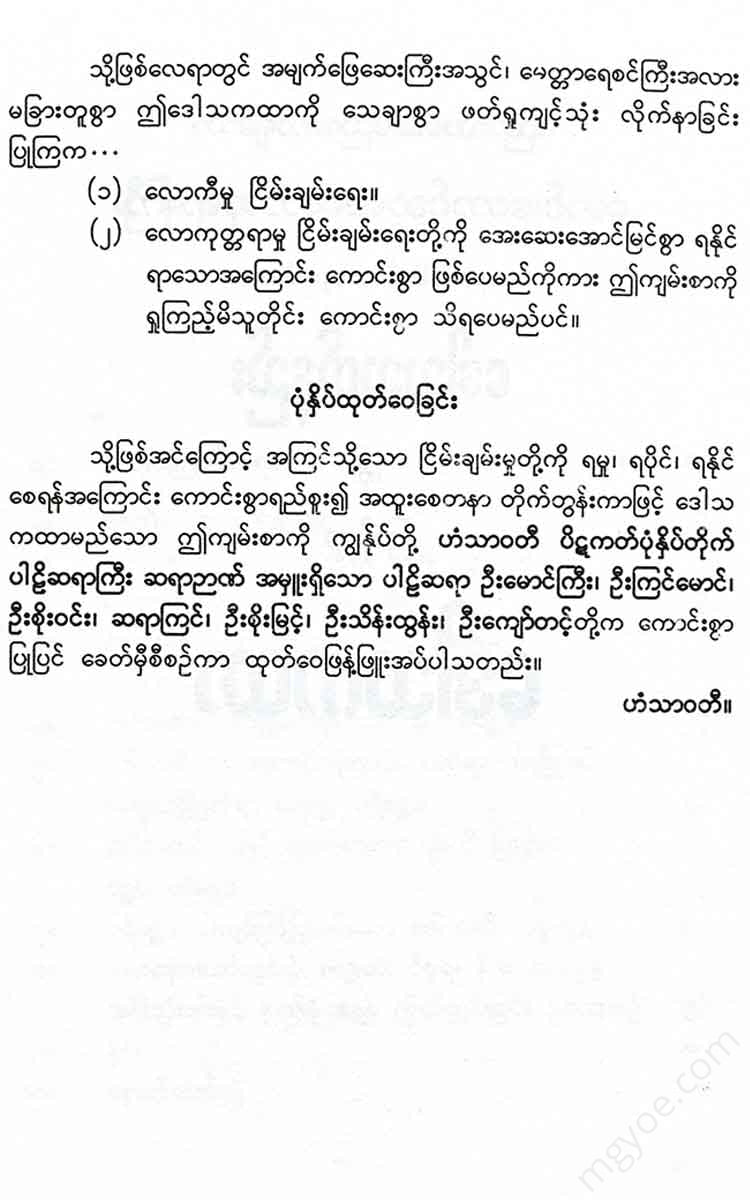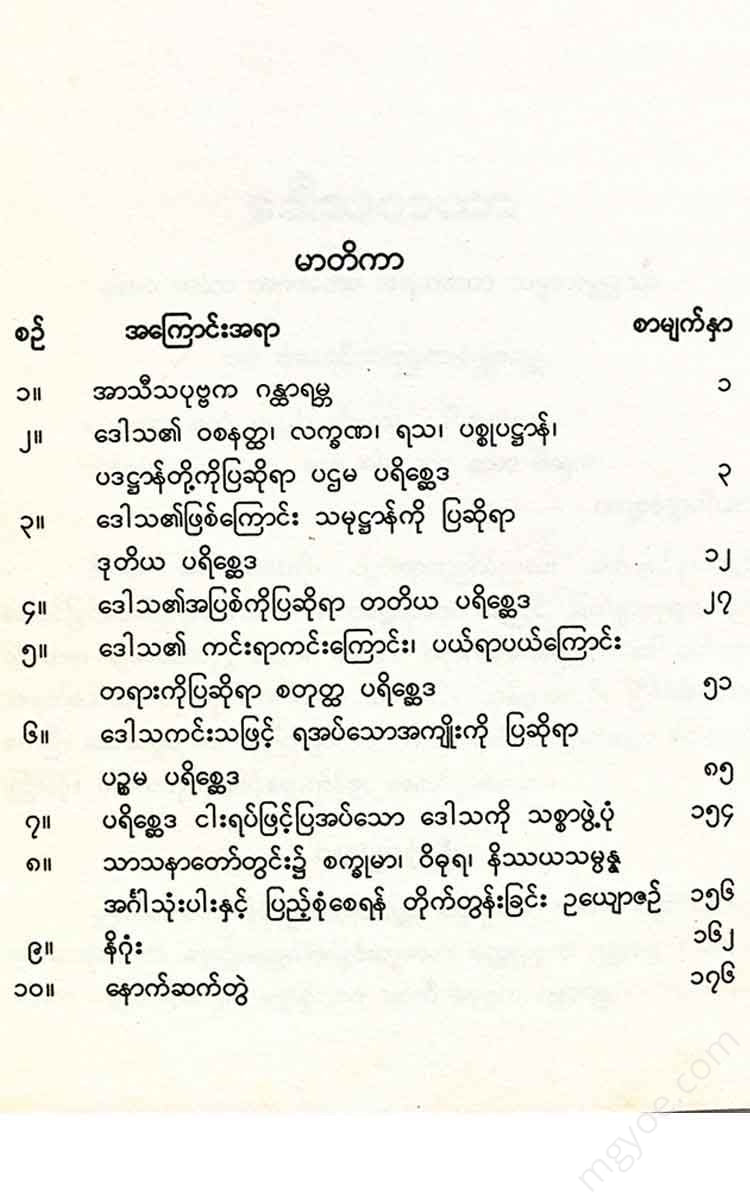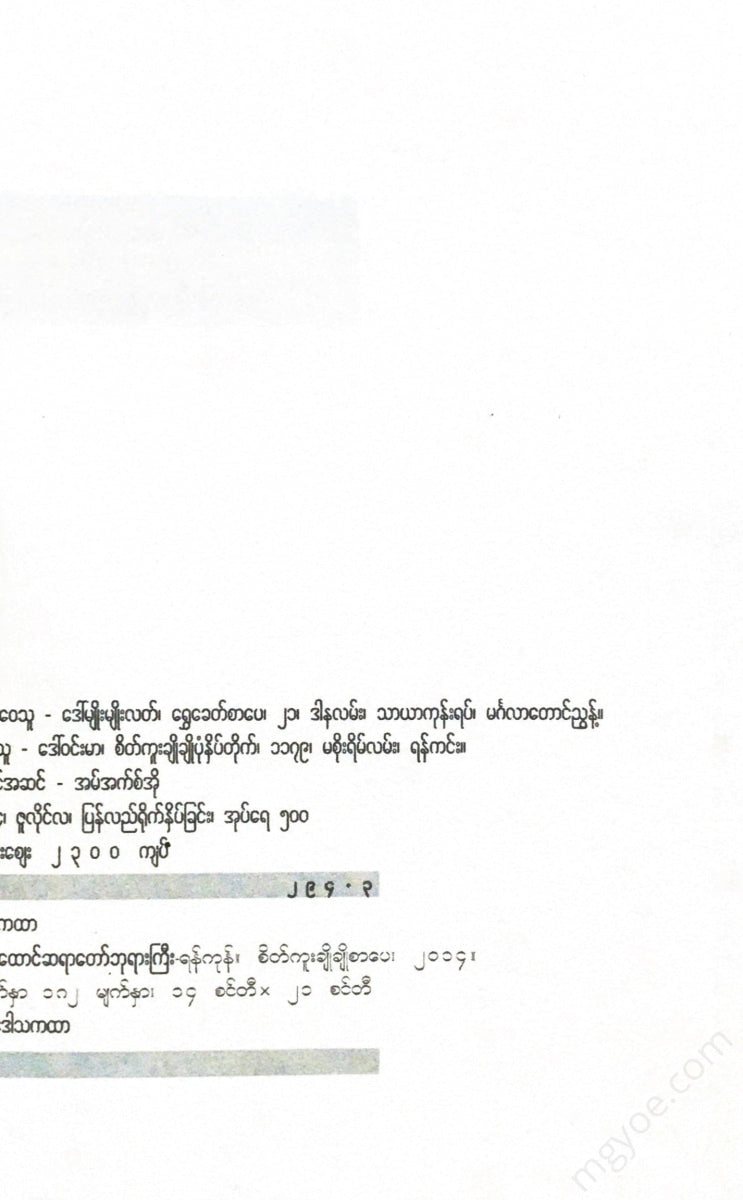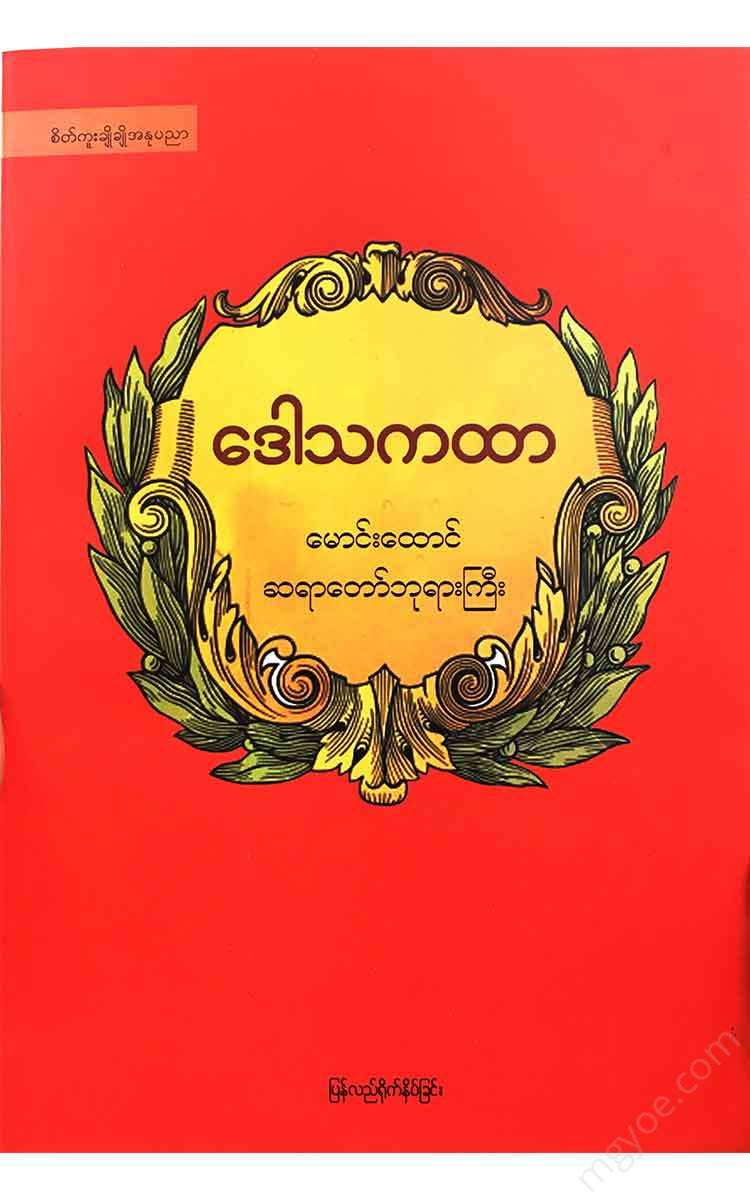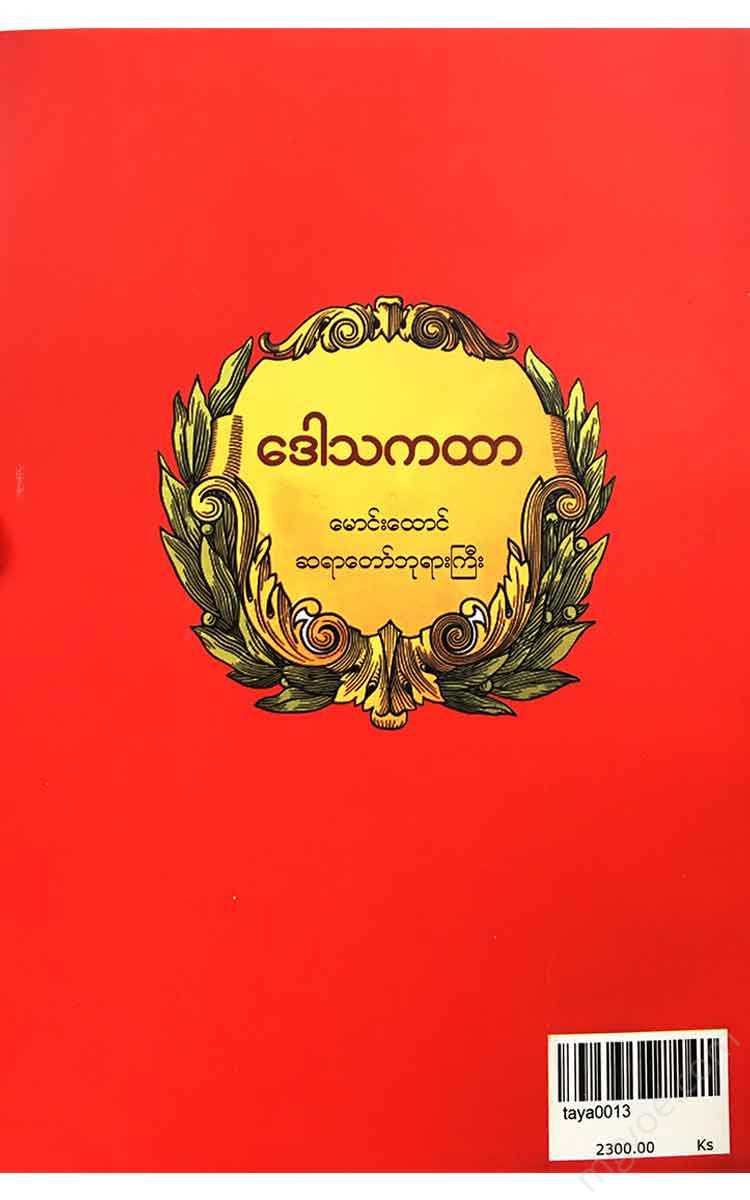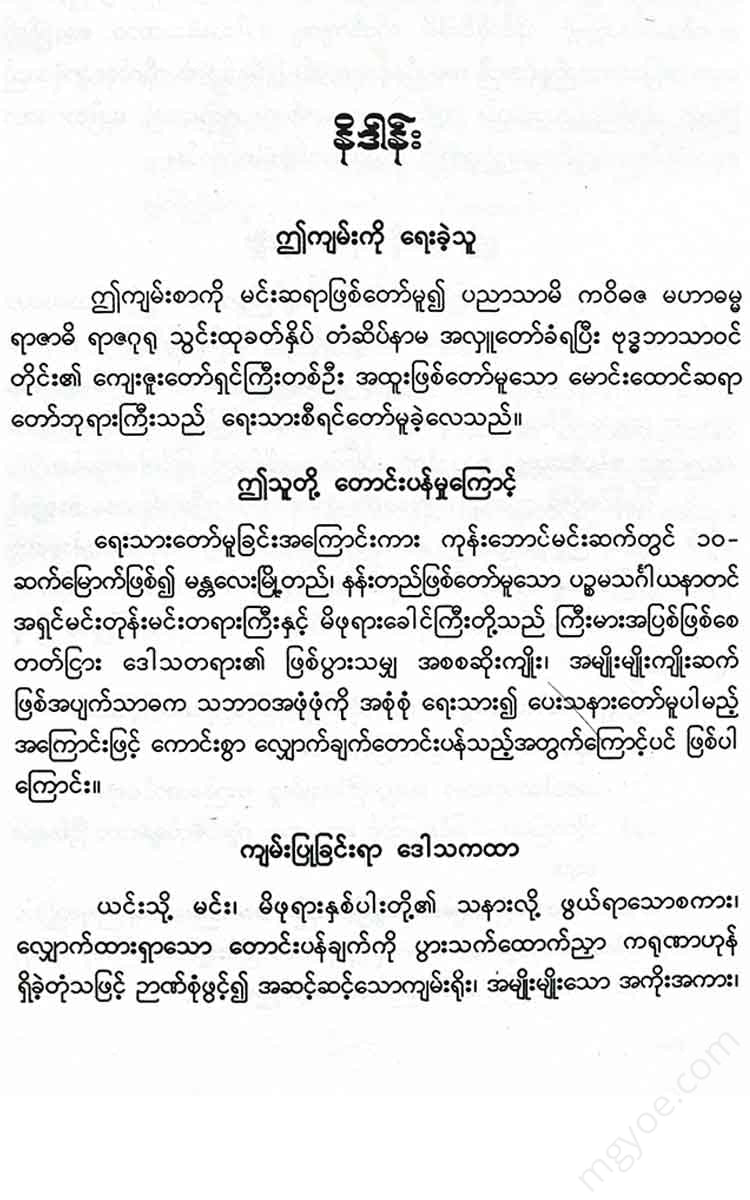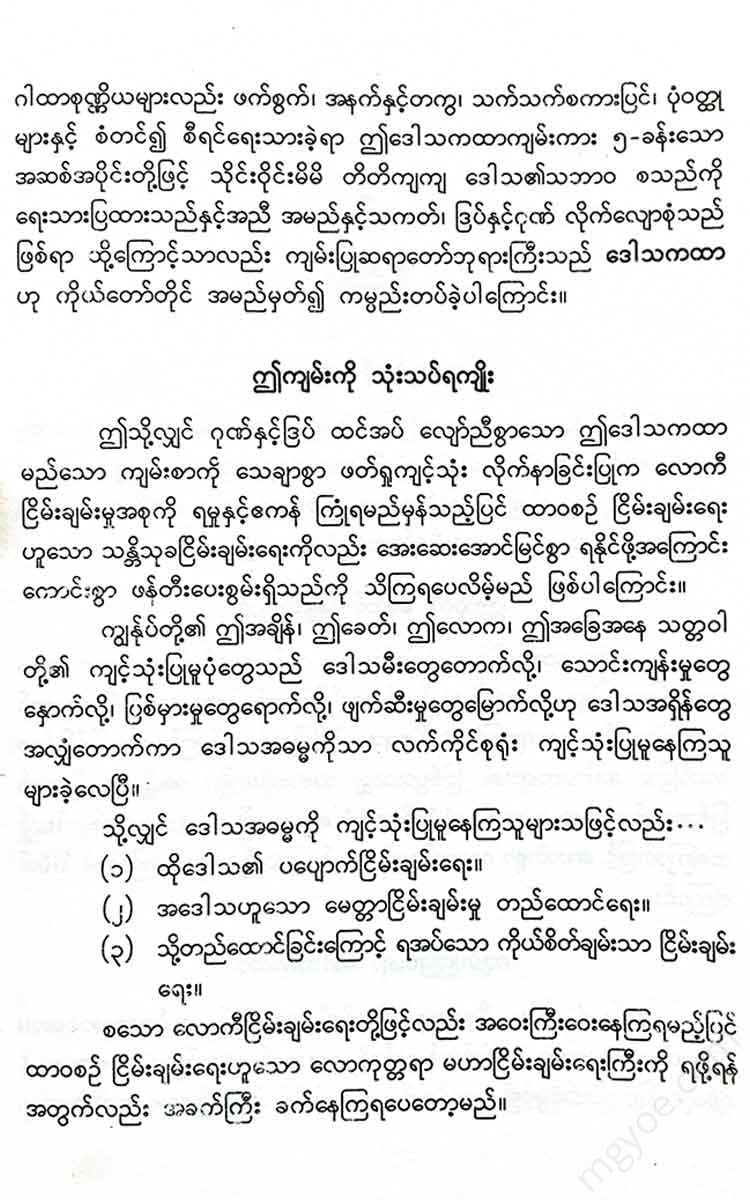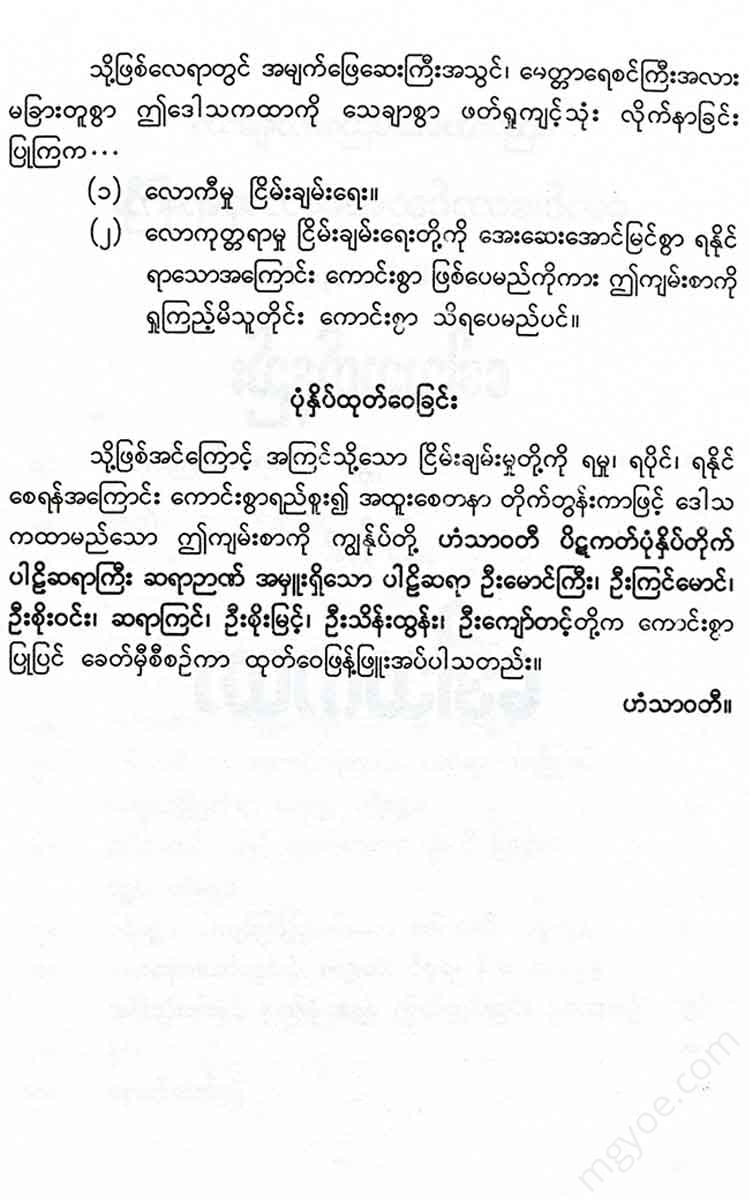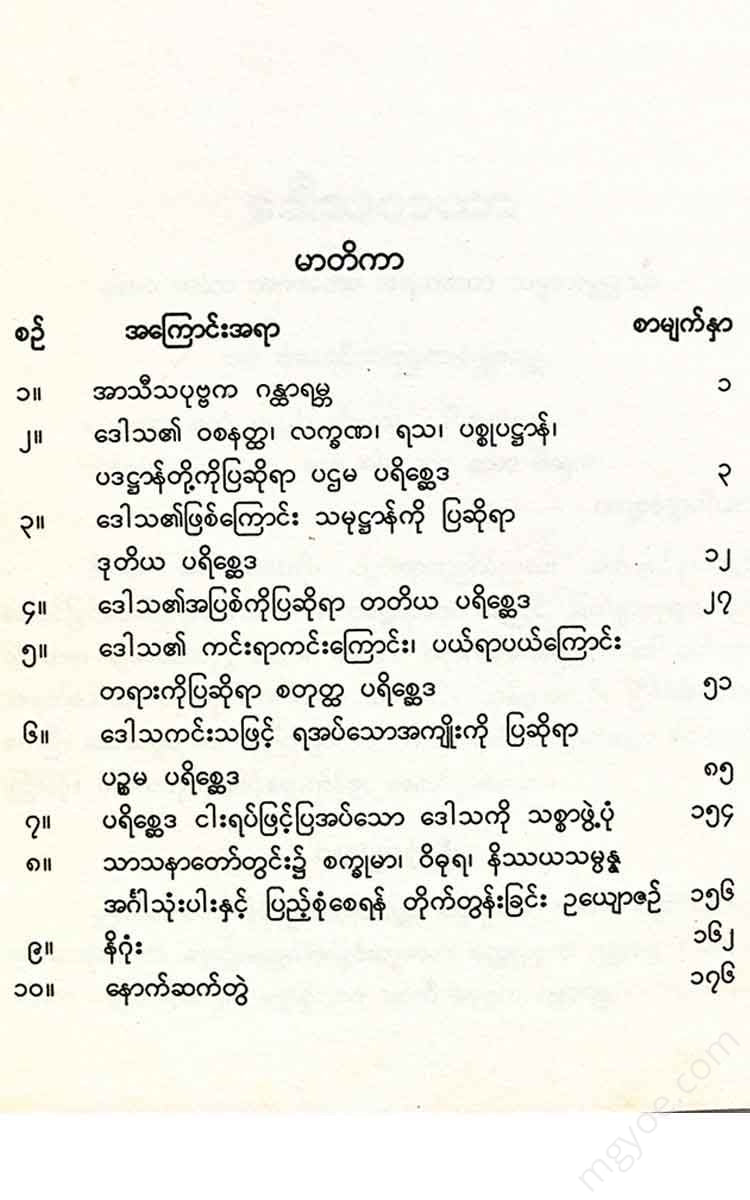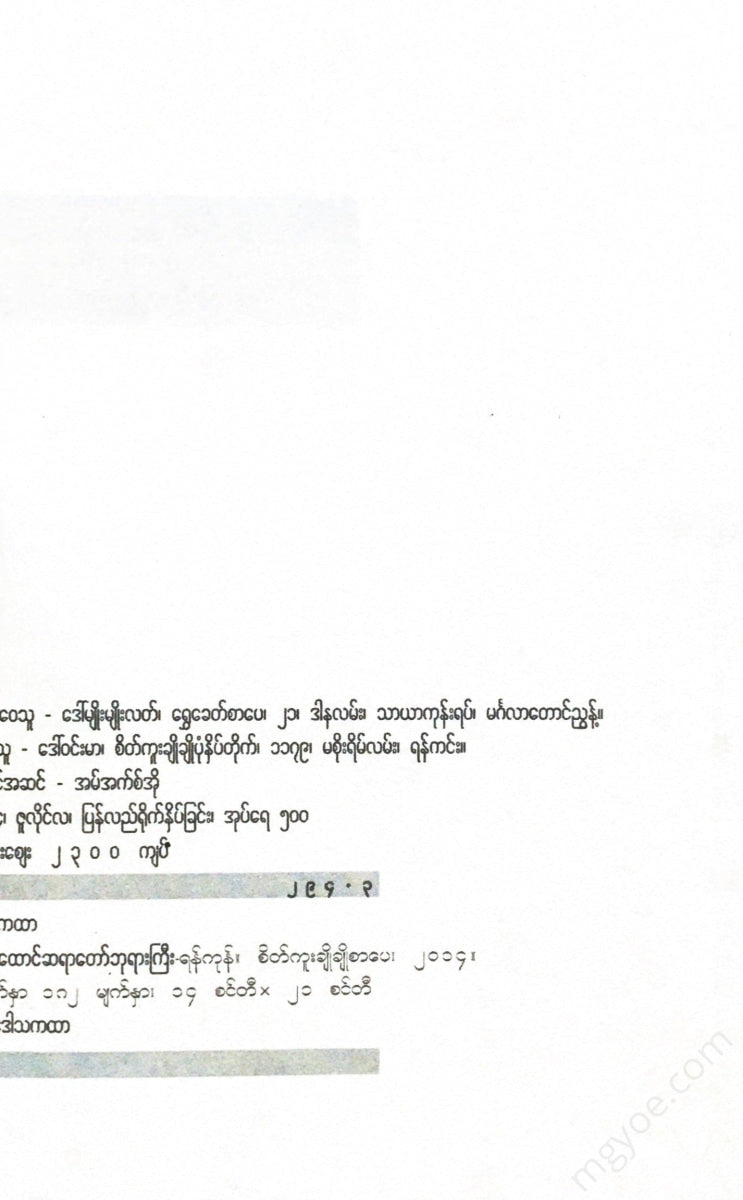စိတ်ကူးချိုချိုစာပေ
Maungtaung Sayadaw Buddha - Anger
Maungtaung Sayadaw Buddha - Anger
Couldn't load pickup availability
Anger
Namo Tassa Bhagavad Gita Arahant Gita Sammassa Buddha
1. The world of the Atishapubvakagantaramba
The king of Dharma, the Buddha, is angry and has a bad karma.
Magna, the one who has attained the state of Nirvana, is the one who has attained the state of Raja.
The Paliyavatta Gatha.
Zino, the five evil spirits, who have grown and crushed, destroyed and destroyed, and have risen victoriously. Yodharmaraja, that Blessed One. Sitena, the cool and cool. Magna, the water of the future path. The fire of anger, the fire of anger, the fire of anger. He has known the knowledge of death and has extinguished it. Sodharmaraja, that Blessed One. Raja, our king, the great king of the Dharma. May he protect and preserve forever.
Three types of Gandhara
This verse is that when offering obeisance, one should not recite the three jewels of the ancient Panama Pubbakagantara, the three jewels of the ancient Pubbakagantara, and when praying for success and happiness, one should recite the ancient Atisha Pubbakatara, the three jewels of
Covenant
At this time, I will perform the Anger Katha, which reveals the evil, filthy, hot, wild, foolish, and dirty forms of anger, the ghost that constantly torments beings, the evil form of anger, which is like a piece of earth, and which has a bad form.
Table of Contents
So that it is easy to remember and take note of in your efforts.
1. The first paricchseda, which explains the vasanattha of anger, as well as the rasa, the present state, and the padathana.
2. The second parishchada, which shows the samadhi of anger.
3. The third parishchada, which shows the sin of anger.
4. The fourth discourse on the cessation and elimination of anger.
5. The fifth paricchseda, which shows the benefits of being free from anger. It is shown in these five elements.
2. The essence of anger, its symptoms, its essence, its present state,
The first parichaseda, which explains the principles.
In the first of the five chapters, what is the mind that arises when one is angry with beings? When one is angry with beings, it is the mind of anger. Why is that mind of anger called anger? It is called the mind of anger because it is associated with the original state called anger-causing. That anger-causing state is the unwholesome state that brings about bad results along with sin, and the wholesome state that brings about good results without sin. Which of these two states is the better? Anger-causing state is the unwholesome state that brings about bad results along with sin.
How to summon anger
Why is that anger angry? It is angry because of the tendency to sin and be cruel. “Vasanattha lakasantha rasa dihi pana dhammaa eva pariyesitabva.” Pana, ahaha, I will show you what to remember. Vasanattha lakasantha rasa dihi eva, vasanattha, lakasantha, rasa, pasupatthana, padatthana. Dhamma, the supreme dhammas. pariyesitabva, sami.
Vasanattha
Thus, as the Lord of the Eighth Path has shown, I will show you the vasanattha, the lasakanta, the rasa, the pasupapathana, and the padattha. Vasanattha is the nature of anger. What is the nature of anger? Evil, anger, and sin are violent. Ititasma, therefore. That nature is the nature of anger. Anger, anger.
Signs etc.
That anger is as violent as a snake struck with a rod. It is as penetrating as a thunderbolt. In other words, it is as burning as a forest fire. It is as oppressive as a rightful enemy. It is as dangerous as a poisoned medicine. It is as dangerous as the cause of enmity.
Different names for anger
That anger is called by many other names, such as byapazzjana, bysandika, by virodha, by pativirodha, by aparipunnavasana, by durutta, by asyropa, by anatmana, by vayusaka, and so on. Of all these names, anger, when it arises, causes one to abandon one's natural nature, and so anger is called byapazzjana.
Downfall due to anger
That is true. When anger is aroused, even if a person is superior to others, and his appearance is as beautiful as that of a golden-golden Nikkāzambuda, all that is pitiable, all that is lovely, all that is dear, all that is dear to him, is consumed and destroyed like grass, vines, and bushes in a forest fire.
This anger is like a piece of land.
Therefore, anger is a spiritual thing and cannot be seen with the physical mind, but when a ghost or a body comes into contact with this world, and although the ghost or body's appearance is not seen, when one sees the behavior of the person who is attached, one has a desire for it, whether it is harsh or soft. One wants it to be white or black. In this way, anger arises as one knows by inference. When one sees the appearance of a person who is not as beautiful as a human being, even a deity, but has a wrinkled face and skin, red cheeks, eyelashes, and eyes, so that others do not want to look at him, one must truly know by inference the evil nature of anger. The ancient teachers who were skilled in grammar said that what is known in this way is called inference. In reference to this, the ancient teachers also said, "If you see smoke, you will know that it is fire, and you will know that it is true."
Introduction
For example, when expressing a sentiment, anger is like a ghost, a ground. That angry person is like a ghost, a ground. That angry person, when angry, acts, speaks, and does not understand, but this person is older than me. He is more virtuous and honorable than me. He is more noble than me. He is more learned than me. In this way, he cannot see, speak, and act as he pleases. That ghost, the ground, is like a
Introduction
Who wrote this book?
This scripture was written by the great monk Maungtaung, who was a teacher of the king, received the seal of the great sage Kavidhaja Mahadhamma Rajadhi Rajaguru, and was a great benefactor of all Buddhists.
Because of these apologies
The reason for writing this is that King Mindon, the 10th ruler of the Konbaung Dynasty and the founder of Mandalay, and the fifth king, who was crowned king, wrote down all the consequences, various consequences, and natural disasters that occurred due to anger, even though they committed great sins, and they pleaded for forgiveness.
The anger of writing
Having heard the compassionate words and pleas of the two kings and queens, he was filled with compassion and understanding, and he wrote the book with a variety of scriptures, various references, and collections of verses, along with their meanings, and with simple words and images. This book, The Book of Anger, is divided into five sections, and is complete in its name, character, and glory, as it describes the nature of anger. Therefore, the great writer of the book, the Buddha , himself named it The Book of Anger and inscribed it with the inscription.
This book is worth considering.
Thus, if we carefully read and practice this book, which is considered to be appropriate for the merits and elements, we will surely experience the attainment of world peace, and we will know that it has the power to create the conditions for the peaceful and successful attainment of eternal peace.
In our time, this era, this world, this situation, the way we behave as beings is because of the fires of anger, the violence, the transgressions, the destruction. There are many people who are filled with anger and are acting out of anger.
So, those who practice anger and violence...
(1) The disappearance of that anger and peace.
(2) Establishing peace and love instead of anger.
(3) The peace of mind and body that comes from establishing this
We will not only be far away from worldly peace, but we will also have great difficulty in achieving the great worldly peace called eternal peace.
Therefore, as a great antidote to anger and a great purifier of love, carefully read, practice, and follow this anger mantra.
( 1) World peace.
(2) May you achieve spiritual peace and tranquility successfully.
Everyone who reads this book will know very well that this is a good thing.
Printing
Therefore, with great dedication and special encouragement to achieve, possess, and attain such peace, this book, which is called the Anger Kathaka, has been well edited, arranged, and published and distributed by our Pali teachers, U Maung Gyi, U Kyin Maung, U Soe Win, Sayar Kyin, U Soe Myint, U Thein Htun, and U Kyaw Tint, under the leadership of Sayar Nyan, the Pali teacher of the Hanthawaddy Pitaka Printing House.
